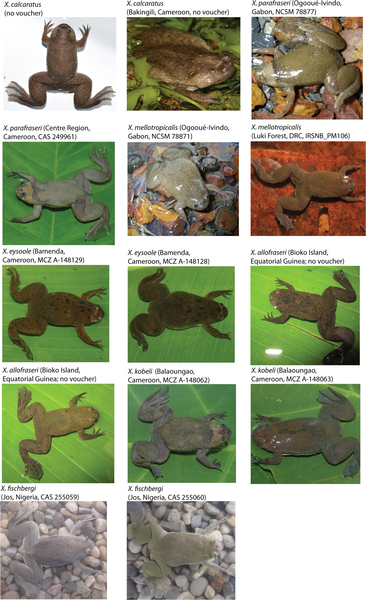Snowflake sprinkled Winter Mushrooms (Flammulina velutipes)
Photo: Mark Conboy
My mother finds some of the most interesting Christmas cards you can imagine. Among the hundreds she's stuck to our family's gifts over the years is one that sticks in my mind: an absurd illustration of a huge red and white Fly Agaric (Amanita muscaria) mushroom protruding from a thick blanket of snow and surrounded by various happy and jolly wintry creatures. I wish I still had that card, just for the laughs it brought me. Fly Agarics don't grow in the winter, at least not where I live, but there is one species that does. My interest in this species was peaked yesterday afternoon when I found a cluster growing on a decrepit old Heart-leaved Willow (Salix cordata).
The wild form of this mushroom is variously called Winter Mushroom, Black Foot, Velvet Foot, Velvet Stem, Velvet Stalk, Velvet Shank, or Seafood Mushroom. There's also a domestic form that goes by a different suite of names: Golden Needle Mushroom, Lily Mushroom, Enoki, and perhaps most popularly, Enokitake. Either way, all names refer to Flammulina velutina, and its the only species of mushroom that regularly fruits in winter. Winter Mushrooms can grow in colder weather than most other species, in part because they have proteins that bind to ice, lowering the freezing point, reducing the chances of cell damage in moderately cold temperatures.
The domestic form of the Winter Mushroom (Flammulina velutipes)
Photo: Chris 73 (Wikimedia Commons)
By comparison to the wild type (top photo), the form of Winter Mushroom that can be purchased in grocery stores and Chinatowns, usually called Enotitake, is almost unrecognizable. Enotitake is one of the most commonly cultivated fungi species in the world. They're grown in darkness, so the mushrooms don't develop any pigments. They're also grown in a CO2-rich environment, which causes the mushrooms to take on a long, thin habit and develop only small button-like caps. Yes, the wild form is edible too, but use caution not to confuse it with other late-fruiting wood-dwelling mushrooms, such as Deadly Galerina (Galerina autumnalis) and its congeners. Needless to say, you don't want to eat Deadly Galerina; expert advice and a good field guide are absolutely necessary when identifying edible mushrooms.

















